Inspired By Place: Residential Architects Talk Landscape Architecture
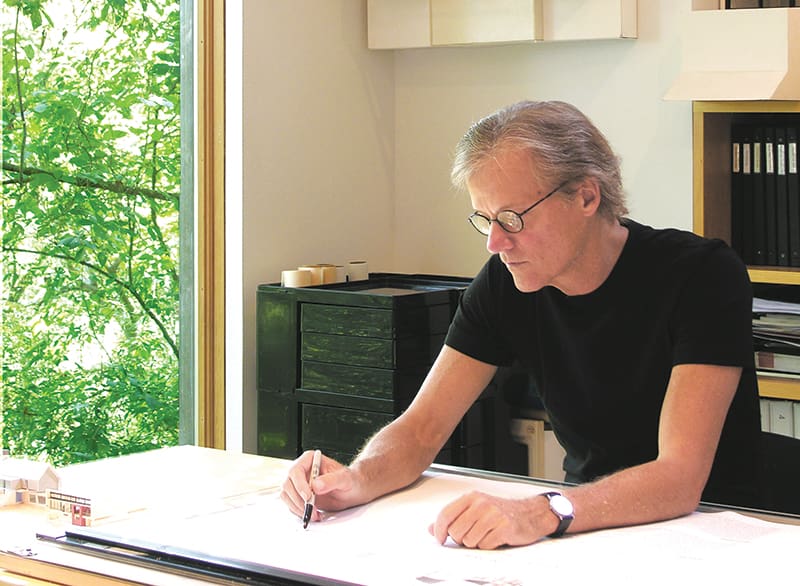
This is first in a series of conversations with three Washington DC area architects about landscape architecture, the power of place, and what it means to make a home.
We landscape architects tend to think about and experience place in a uniquely sensory way. As we walk a site, we feel the changing elevations, the pitch, and roll of the terrain under our feet. We observe relationships between sun and shade, dry and moist, hard, and soft ground. We evaluate soil quality to determine what types of plants will thrive in the environment. Most importantly, we note how the land relates to the house and the house to the land because our work is to bring people and nature together.
We wanted to better understand how the disciplines of landscape architecture and residential architecture intersect at the home site. So we chose three colleagues and asked them to talk about how the home site determines what the home will be. They are:
Mark McInturff, McInturff Architects, Bethesda MD
Lorena Checa, Checa Architects, Washington DC
James McDonald, McDonald Associates Architects, Great Falls, VA
We expected there to be similarities but were pleasantly surprised to discover how much we think alike. Our first of the three conversations was with Mark McInturff of McInturff Architects in Bethesda, Maryland. [Note: Photography by Julia Heine]
Does the site provide inspiration for the house design?
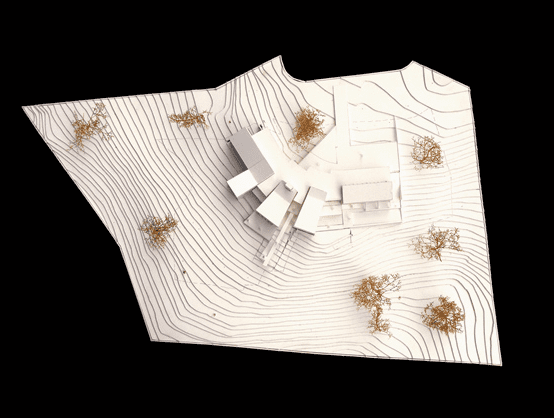
You really can’t start a design without knowing the site because the design has to be site-specific. I can’t imagine how you would even think about a floor plan without knowing the site.
The first thing I do is trace over the property survey. I put the sun on it and that sort of stuff. From that point on, every line I draw is in response to the lines that are already there: the property lines, the views, the wind, the sun, and all that stuff.
I start by thinking of an array of rooms—the dominant spaces being the living room, dining room, kitchen, and master bedroom. I then start to construct a hierarchy of spaces that take advantage of their position on the site.
Do you view the landscape as a living space or as a setting for the dwelling?
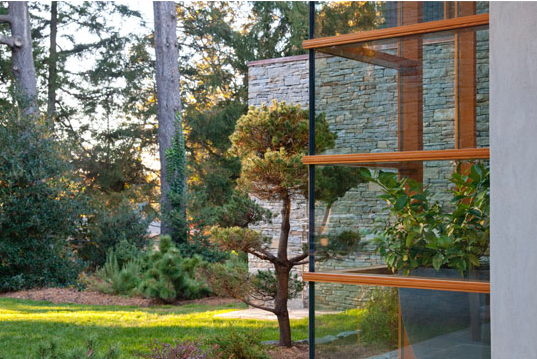
For us, there is a kind of reciprocal relationship between the inside and the outside. Whatever is outside is supporting life on the inside and visa versa. So, once the house is positioned, the rest of the site will start to play a role in the program. It might be something that is framing a view. It might be something that you look down on, something you are sitting out on.
In general, you don’t want to fight the site. A good landscape architect is going to have a pretty strong feeling about that just as a good architect would. Mark McInturff, FAIA

How do the principles of landscape architecture and residential architecture interact?
Ultimately, there is a back and forth between the two. In siting a new house, the landscape architect, ideally, is involved early on in helping to position or choose the part of the site that works best from a topographic and landscape point of view. Then the architect goes to work and begins to develop an array of rooms that will occupy their positions on the site to advantage. Then the landscape architect pulls the geometry of those rooms out into the site. And then the architect pulls the materials from the landscape back to the house. So there is pretty much a dialogue or something like a call and response that is happening between the two from the very beginning.
Begin your project with a dream and a plan!
You are at the threshold of an exciting journey. This eBook will provide sound guidance as you take your first steps.
How do you relate to the landscape architect in the planning process?
Procedurally the landscape architect is contracted separately with the owner. We’ve been trying to get clients to use a landscape architect and to get them in fairly early on. But that doesn’t always happen. I have done projects where it isn’t on the owner’s radar until the very end. And then they just bring in a nursery type outfit. I’ve had projects butchered that way. So you really would like to have more control over that. If I can get someone that I know and respect, the back and forth can be quite rich and involved. It’s almost conversational.
One thing you see all the time from developers is that they take a flat site house plan and drop it on a hill. Whoever drew that house never saw the site. Mark McInturff, FAIA
Is landscaping typically an afterthought or token decorative effect?
Even if the owner isn’t going to have the budget to implement a landscape master plan, I think having one—not just cobbling it together afterward—is important.
Someone told me the story behind a Hugh Jacobson house out on the Eastern Shore. His client took Jacobsen and Lester Collins the landscape architect to look at a parcel of land and said: ‘I want you to plant an allee (the French term for avenue) of trees from the road 200 feet into the property. That’s where my house is going to be in ten years.’ Ten years later they returned to build the house. I thought that was wonderful because there was a master plan —or at least a big idea— that came before everything. I’m sure Jacobsen knew the approach was going to be important—what he called “the drumroll” that sets up the arrival experience. They just planted that drumroll in advance to give it a head start. I thought it was a great idea.
We had an opportunity to do something like that about twenty years ago. It’s on our website and is called Allee House. The story is our clients bought a small farm site with a prefabricated house. After building a barn, they planted an allee of pin oaks that led to nowhere in particular.
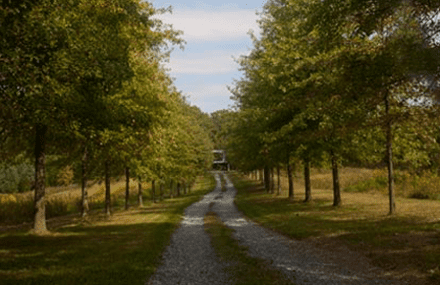
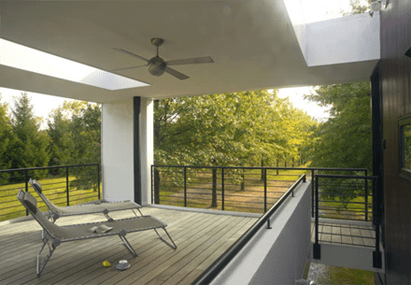
We were brought in to design a new house. Rather than build right at the end of the allee, as one might expect, we proposed to sidestep this powerful axis. The new house, with its principal living spaces elevated to take in the views, spans the drive, which continues through the house and back to the barn. The owners can stand on the upper porch to welcome visitors as they arrive and pass underneath to park around the back.
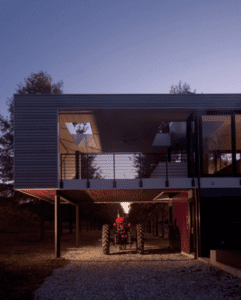
Many thanks to our esteemed colleague Mark McInturff for taking the time to share his thoughts with us. The next installment in our series features notes from our conversation with Lorena Checa whose vision—even with a simple renovation–takes her deep into the spirit of a place and the people who will live there.
And, as always, please feel free to connect with us. Our landscape architects are eager to talk with people who desire to complete the process of making their house and surroundings into a real home. That’s a thrill. And that’s exactly why we do what we do.